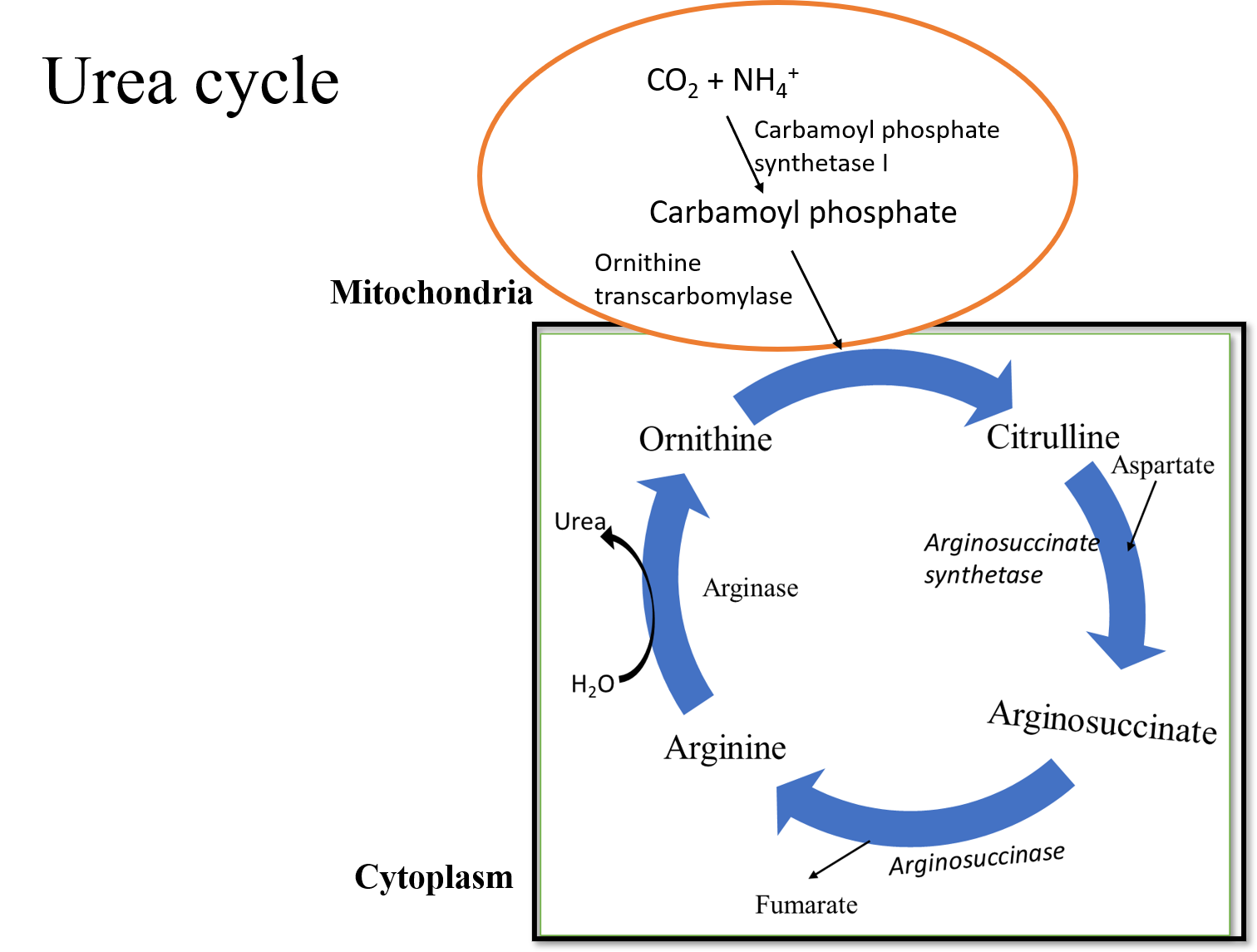Answer
408.6k+ views
Hint: A cycle of reactions that occur due to the formation of urea from ammonia to convert it into a less toxic waste for the removal outside the body.
Complete answer:
The ornithine cycle, also known as the urea cycle which converts the highly toxic ammonia to urea for the excretion. It occurs mostly in uricotelic organisms. Most aquatic organisms, or ammonotelic animals, excrete ammonia without converting it into urea. This occurs because of the amino acid catabolism which results in the formation of ammonia as a waste product.
The organisms need to remove this ammonia waste product from their body as it is highly toxic. Few organisms cannot easily remove nitrogen from ammonia, these organisms convert the ammonia into less toxic substances like urea and uric acid with the help of the ornithine cycle. This cycle occurs mainly in the liver of an organism.
The urea produced in the liver is then passed into the bloodstream from where it travels to the kidneys and gets filtered resulting in the excretion of the urine. The ornithine cycle is very significant in the case of those organisms which cannot convert ammonia into urea and this will become deadly for the organism.
The ammonia which is converted into uric acid is mostly excreted in the solid form. This cycle is generally found in birds and insects.

Note: During protein metabolism, excess nitrogen is eliminated from nitrogen compounds resulting in nitrogenous wastes. These nitrogenous wastes can be ammonia, urea, uric acid, and creatinine. The organisms which excrete ammonia are called ammonotelic, those organisms which excrete urea are called ureotelic, and those organisms which excrete uric acid are called uricotelic.
Complete answer:
The ornithine cycle, also known as the urea cycle which converts the highly toxic ammonia to urea for the excretion. It occurs mostly in uricotelic organisms. Most aquatic organisms, or ammonotelic animals, excrete ammonia without converting it into urea. This occurs because of the amino acid catabolism which results in the formation of ammonia as a waste product.
The organisms need to remove this ammonia waste product from their body as it is highly toxic. Few organisms cannot easily remove nitrogen from ammonia, these organisms convert the ammonia into less toxic substances like urea and uric acid with the help of the ornithine cycle. This cycle occurs mainly in the liver of an organism.
The urea produced in the liver is then passed into the bloodstream from where it travels to the kidneys and gets filtered resulting in the excretion of the urine. The ornithine cycle is very significant in the case of those organisms which cannot convert ammonia into urea and this will become deadly for the organism.
The ammonia which is converted into uric acid is mostly excreted in the solid form. This cycle is generally found in birds and insects.

Note: During protein metabolism, excess nitrogen is eliminated from nitrogen compounds resulting in nitrogenous wastes. These nitrogenous wastes can be ammonia, urea, uric acid, and creatinine. The organisms which excrete ammonia are called ammonotelic, those organisms which excrete urea are called ureotelic, and those organisms which excrete uric acid are called uricotelic.
Recently Updated Pages
What is pericarp class 10 biology CBSE

Define external fertilization Mention its disadvan class 10 biology CBSE

Percolation tank is constructed to impound A Runoff class 10 biology CBSE

In which region nerve impulses are transmitted and class 10 biology CBSE

Define totipotency class 10 biology CBSE

Which pyramid is always upright can never be inverted class 10 biology CBSE

Trending doubts
Difference Between Plant Cell and Animal Cell

Give 10 examples for herbs , shrubs , climbers , creepers

Difference between Prokaryotic cell and Eukaryotic class 11 biology CBSE

Fill the blanks with the suitable prepositions 1 The class 9 english CBSE

Name 10 Living and Non living things class 9 biology CBSE

Change the following sentences into negative and interrogative class 10 english CBSE

Fill the blanks with proper collective nouns 1 A of class 10 english CBSE

Select the word that is correctly spelled a Twelveth class 10 english CBSE

Write the 6 fundamental rights of India and explain in detail



